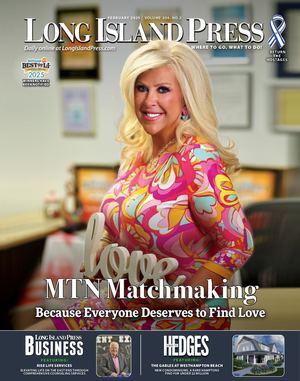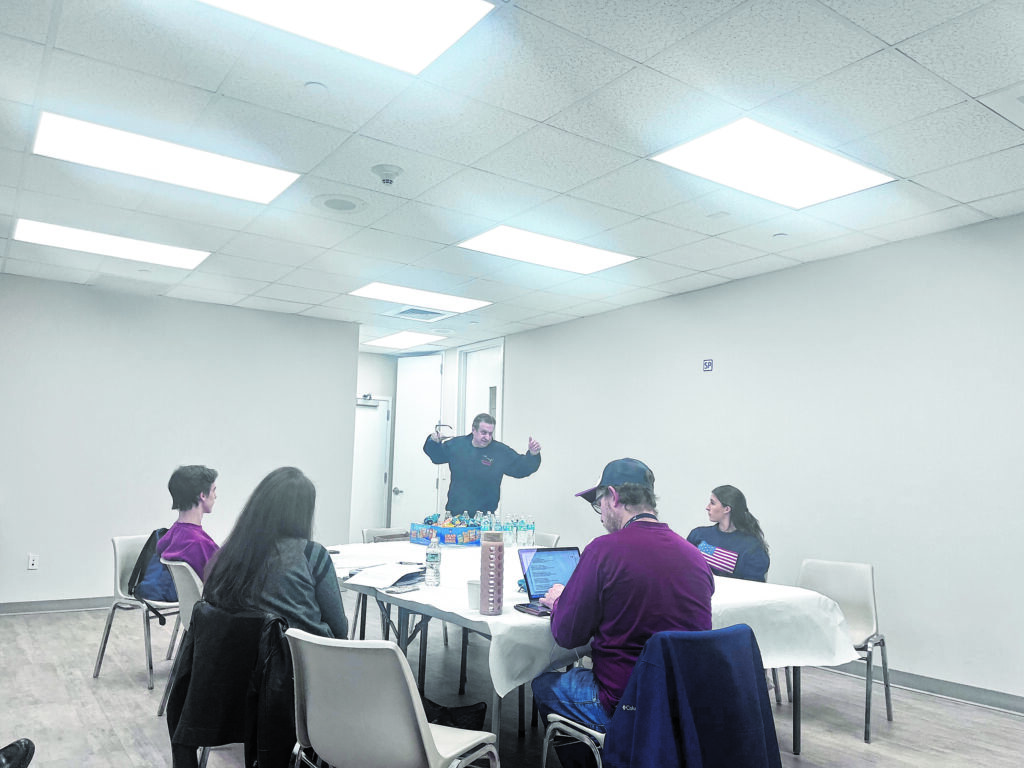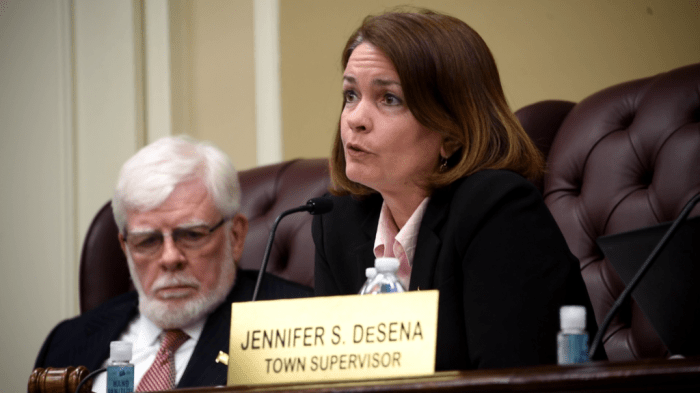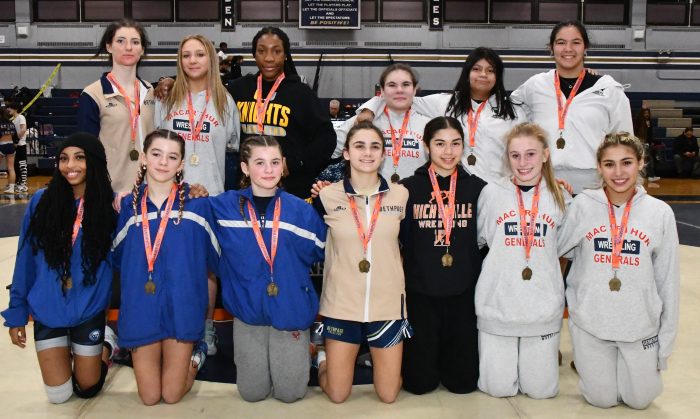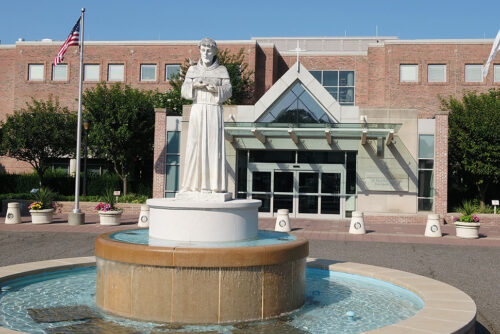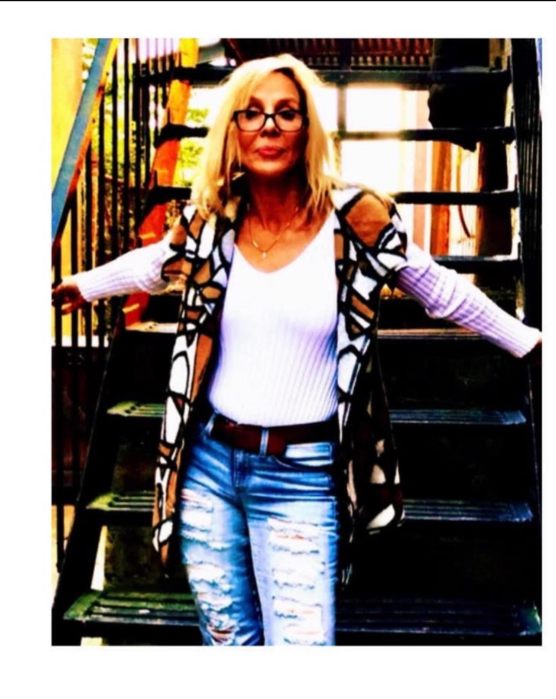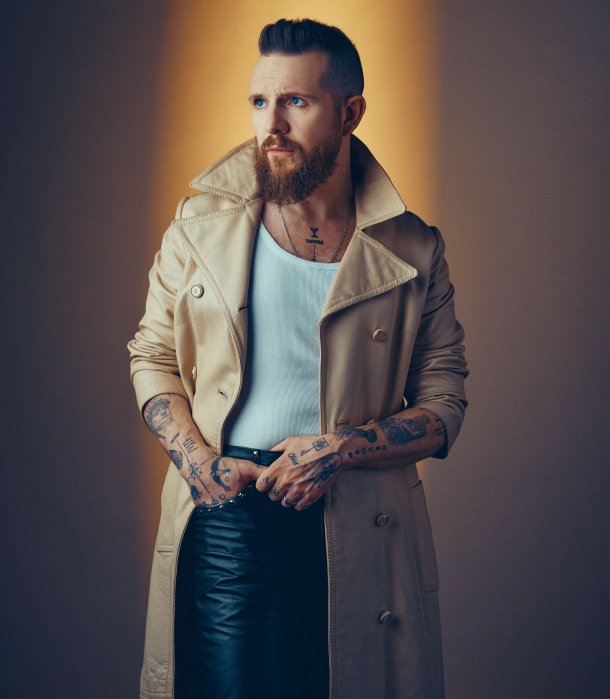UJA, Sid Jacobson JCC preserve stories of the Holocaust
Learning about the Holocaust from a textbook is not the same as hearing a first-witness account. And for a group of local students, the events of the past just became all the more present by spending time with a Holocaust survivor. The experience culminated with an art exhibit and a film at the Tilles Center for Performing Arts at Long Island University in Brookville on April 24, where the students helped tell the stories of their new dear friends or mentors.
“Every single survivor’s story is really a motion picture, worthy of a movie,” said Yeeshai Gross, the producer of Witness Project and director of Witness Project films. “No matter how they survived, if they hid in a forest, if they survived in a camp, or if they were hidden by righteous gentiles, if they got through the war somehow, their story is incredible. Because you couldn’t survive at that time without an incredible story.”
Witness Project is a collaborative process between high school students and Holocaust survivors in an effort to preserve the stories of survival, heartbreak and bravery. The project is a partnership between UJA Federation and the Sid Jacobson Jewish Community Center in Greenvale.
“I felt so comfortable talking [with the survivors], almost like a friend my age,” said Sarabeth Levin, a junior at Friends Academy in Locust Valley, who worked with a survivor named Martin Bloch. “I’ve gained so much knowledge and wisdom.”
Funds raised by this project support services for Holocaust survivors in the community who despite living through the unimaginable are now just scraping by when it comes to buying groceries, paying rent and getting their prescriptions.
The following survivors that are featured in this year’s Witness Project are Martin Bloch, Sabine Breier, Renee Silver, Rubin Wagner (whose story is shared by his son, Harry Wagner), and Fred Zeilberger. Here are just some of their stories, in part:
Martin Bloch:
Born in Lithuania, Bloch had the area where he lived attacked by the Germans in 1941 and his father, who was a teacher, was forced along with 120 other Jewish doctors, lawyers and teachers, to dig their grave before being executed. Bloch, his mother and brother then were forced into a ghetto in Belarus until they escaped and hid with a righteous gentile in the forest. Bloch eventually joined the Jewish Bielski partisans. When the war ended, Bloch and his family made it to Berlin and lived in a displaced persons camp. Bloch moved to the United States in 1952 and in 1961 founded Frequency Electronics, Inc. He is married with three children and four grandchildren.
Sabine Breier:
Born in 1938, she was one of four children. Breier and her sister, the two youngest, were rescued when the war started through the Kindertransport, an organized effort to save children from Nazi-controlled territory. The sisters were raised in separate households in England, until relatives arranged for her to immigrate to the United States and live with a Jewish family. Breier became a teacher, got married and has wonderful children and grandchildren.
Rubin Wagner:
Wagner and his wife Sima, both born in 1919 in Vilna, Poland, now the capital of Lithuania, was forced to move to a ghetto in 1939 after Vilna was invaded by the Soviets and overrun by the Germans. When the ghetto was liquidated, Sima and Rubin were then shuttled between nine different concentration camps. After the war, Sima and Rubin were miraculously reunited in Vilna but learned that most of their family had been murdered, including their daughter and Sima’s mother. Unsafe and unwelcome at their former home in Vilna, they went to a displaced persons camp in Heidenheim, Germany, where their son Harry was born in 1946. The family immigrated to New York City and slowly rebuilt their lives, raising Harry and his new brother in Brooklyn and Long Island. For Witness Project, Harry told the story of his parents.
“Unfortunately, we are preparing ourselves for a time that is coming where we’re not going to be able to have survivors tell their stories and yet the stories have to continue,” said Gross, a third-generation survivor. “Therefore, we are trying to work out how to have these stories continue through the second generation of survivors.”
The students, in pairs, visited Sid Jacobson JCC on April 18 and 19 ahead of their performance at the Tilles Center. The students practiced the introductions to the films that would be shown. In the introductions, the students took turns summarizing the experience of the survivor that would be profiled.
Matthew Finkel, a junior at Syosset High School, who also interviewed Bloch, said he was surprised at Bloch’s attitude.
“He just seemed like a very happy guy and it just shows he overcame such a terrible thing,” Finkel said. “But on top of that, when he described his experience, he was describing it through the lens of his childhood self, because he was young during the war. So it was very interesting to hear how even during such a hard time, he was still able to maintain some level of innocence because he wasn’t living in a concentration camp, he was living in a forest. It’s by no means easy, but it’s a very different environment.”
And the program is all the more important as incidents of antisemitism are on the rise, and, as Levin explained, no form of antisemitism should ever be accepted, because “all it takes is just one person or one small sentence that could spark something so awful.”
“It’s up to me and the rest of the kids my age, whether they be Jewish or not, to continue the stories of these survivors and tell them to the next generation and make sure nothing like this happens again to anyone, on any scale,” Finkel said.
To learn more, visit www.ujafedny.org/event/view/witness.
